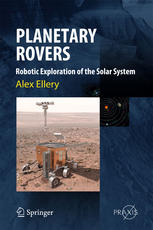

Most ebook files are in PDF format, so you can easily read them using various software such as Foxit Reader or directly on the Google Chrome browser.
Some ebook files are released by publishers in other formats such as .awz, .mobi, .epub, .fb2, etc. You may need to install specific software to read these formats on mobile/PC, such as Calibre.
Please read the tutorial at this link: https://ebookbell.com/faq
We offer FREE conversion to the popular formats you request; however, this may take some time. Therefore, right after payment, please email us, and we will try to provide the service as quickly as possible.
For some exceptional file formats or broken links (if any), please refrain from opening any disputes. Instead, email us first, and we will try to assist within a maximum of 6 hours.
EbookBell Team

4.7
96 reviewsThe increasing adoption of terrain mobility – planetary rovers – for the investigation of planetary surfaces emphasises their central importance in space exploration. This imposes a completely new set of technologies and methodologies to the design of such spacecraft – and planetary rovers are indeed, first and foremost, spacecraft. This introduces vehicle engineering, mechatronics, robotics, artificial intelligence and associated technologies to the spacecraft engineer’s repertoire of skills. Planetary Rovers is the only book that comprehensively covers these aspects of planetary rover engineering and more. The book:
• discusses relevant planetary environments to rover missions, stressing the Moon and Mars;
• includes a brief survey of previous rover missions;
• covers rover mobility, traction and control systems;
• stresses the importance of robotic vision in rovers for both navigation and science;• comprehensively covers autonomous navigation, path planning and multi-rover formations on other planets;
• introduces sample acquisition and autonomous science – with an emphasis on astrobiology – as the raison d’être of rover missions;
• presents a special case study on the exploration of Europa;
• discusses future rover concepts, including a brief exploration of the role of biomimetics.